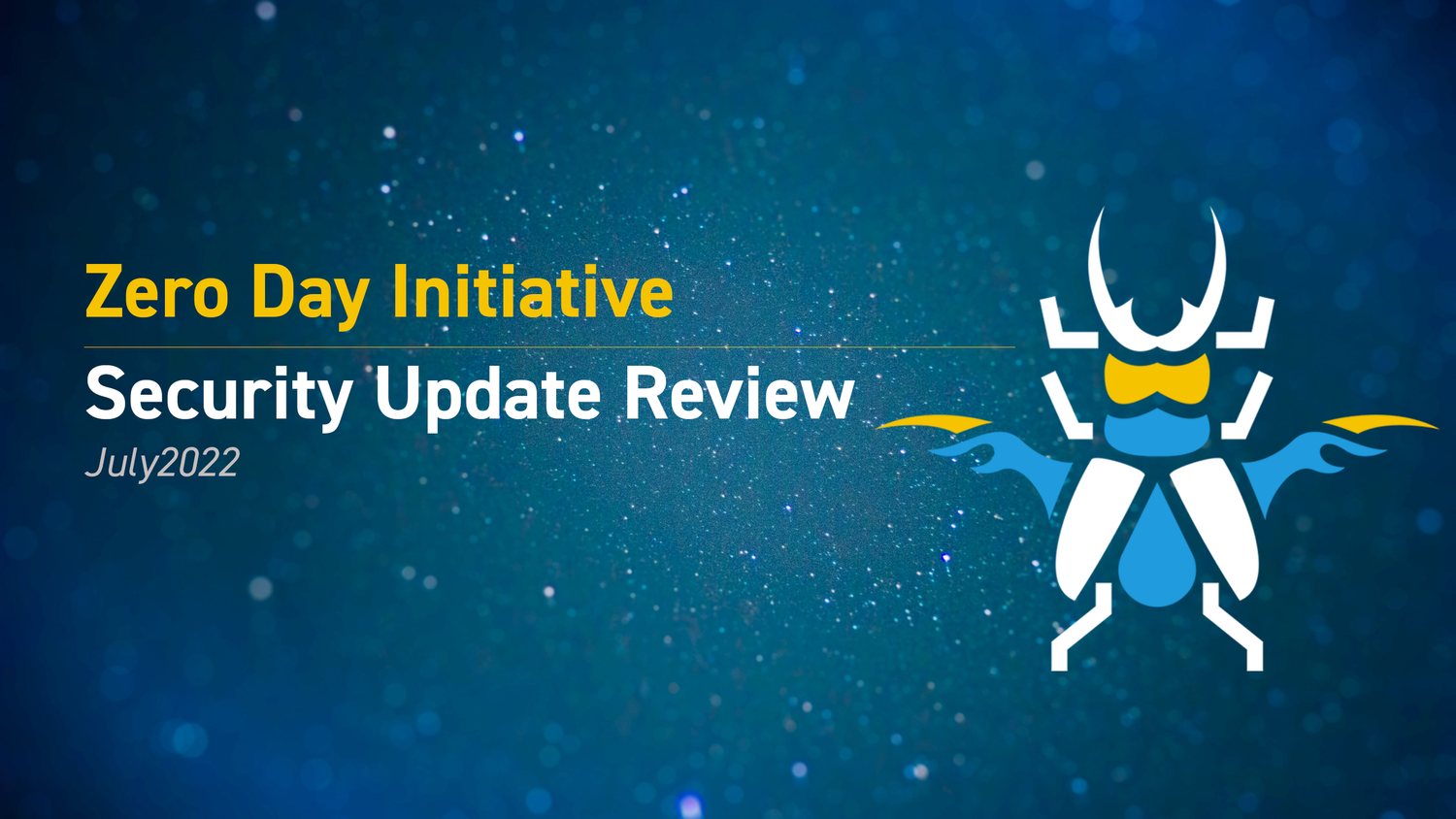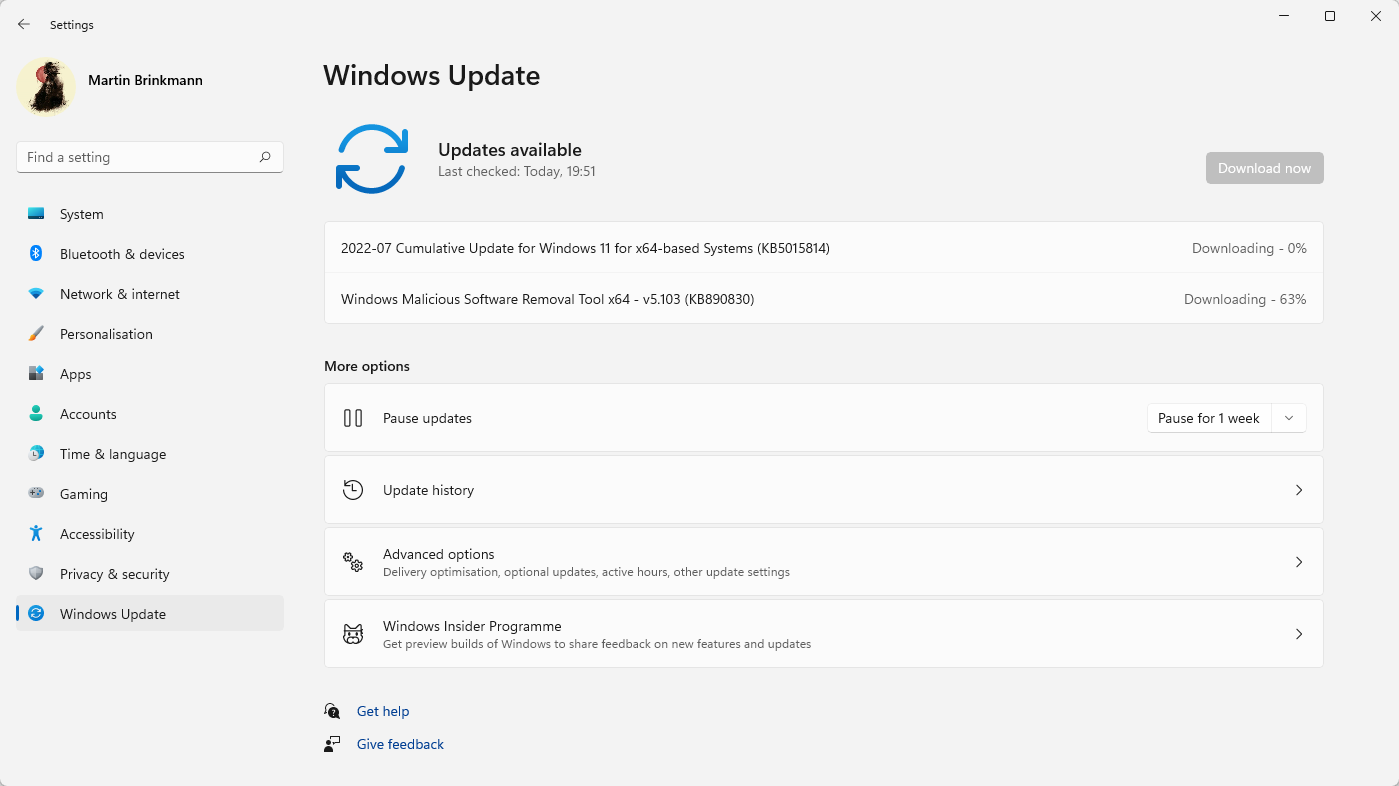It’s once again Patch Tuesday, which means the latest security updates from Adobe and Microsoft have arrived. Take a break from your regularly scheduled activities and join us as we review the details of their latest security offerings.
Adobe Patches for July 2022
For July, Adobe addressed 27 CVEs in four patches for Acrobat and Reader, Photoshop, RoboHelp, and Adobe Character Animator. A total of 24 of these bugs were reported through the ZDI program. The update for
Acrobat and Reader addresses a combination of 22 different Critical- and Important-rated bugs. The most severe of these could allow code execution if an attacker convinces a target to open a specially crafted PDF document. While there are no active attacks noted, Adobe does list this as a Priority 2 deployment rating. The update for
Photoshop fixes one Critical- and one Important-rated bug. The Critical bug is a use-after-free (UAF) that could lead to code execution. The fix for
Character Animator addresses two Critical-rated code execution bugs – one a heap overflow and the other an out-of-bounds (OOB) read. Finally, the patch for
RoboHelp corrects a single Important-rated cross-site scripting (XSS) bug.
None of the bugs fixed by Adobe this month are listed as publicly known or under active attack at the time of release. Adobe categorizes most of these updates as a deployment priority rating of 3, with the Acrobat patch being the lone exception at 2.
Microsoft Patches for July 2022
For July, Microsoft released 84 new patches addressing CVEs in Microsoft Windows and Windows Components; Windows Azure components; Microsoft Defender for Endpoint; Microsoft Edge (Chromium-based); Office and Office Components; Windows BitLocker; Windows Hyper-V; Skype for Business and Microsoft Lync; Open-Source Software; and Xbox. This is in addition to the two CVEs patched in Microsoft Edge (Chromium-based). That brings the total number of CVEs to 87.
While this higher volume is expected for a July release, there are still no fixes available for the multiple bugs submitted during the last Pwn2Own competition. And after a brief respite last month, there are additional updates for the Print Spooler. Looks like this component will be back to a monthly release schedule.
Of the 84 new CVEs released today, four are rated Critical, and 80 are rated Important in severity. One of these bugs was submitted through the ZDI program. None of the new bugs patched this month are listed as publicly known, but one of the updates for CSRSS is listed as under active attack. Let’s take a closer look at some of the more interesting updates for this month, starting with the CSRSS bug under active attack:
-
CVE-2022-22047 – Windows CSRSS Elevation of Privilege
This bug is listed as being under active attack, but there’s no information from Microsoft on where the vulnerability is being exploited or how widely it is being exploited. The vulnerability allows an attacker to execute code as SYSTEM, provided they can execute other code on the target. Bugs of this type are typically paired with a code execution bug, usually a specially crafted Office or Adobe document, to take over a system. These attacks often rely on macros, which is why so many were disheartened to hear Microsoft’s delay in blocking all Office macros by default.
-
CVE-2022-30216 – Windows Server Service Tampering Vulnerability
This patch corrects a tampering vulnerability in the Windows Server Service that could allow an authenticated attacker to upload a malicious certificate to a target server. While this is listed as “Tampering”, an attacker who could install their own certificate on a target system could use this bug for various purposes, including code execution. While tampering bugs don’t often get much attention, Microsoft does give this its highest exploit index rating, meaning they expect active exploits within 30 days. Definitely test and deploy this patch quickly – especially to your critical servers.
-
CVE-2022-22029 – Windows Network File System Remote Code Execution Vulnerability
This is the third month in a row with a Critical-rated NFS bug, and while this one has a lower CVSS than the previous ones, it could still allow a remote, unauthenticated attacker to execute their code on an affected system with no user interaction. Microsoft notes multiple exploit attempts may be required to do this, but unless you are specifically auditing for this, you may not notice. If you’re running NFS, make sure you don’t ignore this patch.
-
CVE-2022-22038 - Remote Procedure Call Runtime Remote Code Execution Vulnerability
This bug could allow a remote, unauthenticated attacker to exploit code on an affected system. While not specified in the bulletin, the presumption is that the code execution would occur at elevated privileges. Combine these attributes and you end up with a potentially wormable bug. Microsoft states the attack complexity is high since an attacker would need to make “repeated exploitation attempts” to take advantage of this bug, but again, unless you are actively blocking RPC activity, you may not see these attempts. If the exploit complexity were low, which some would argue since the attempts could likely be scripted, the CVSS would be 9.8. Test and deploy this one quickly.


